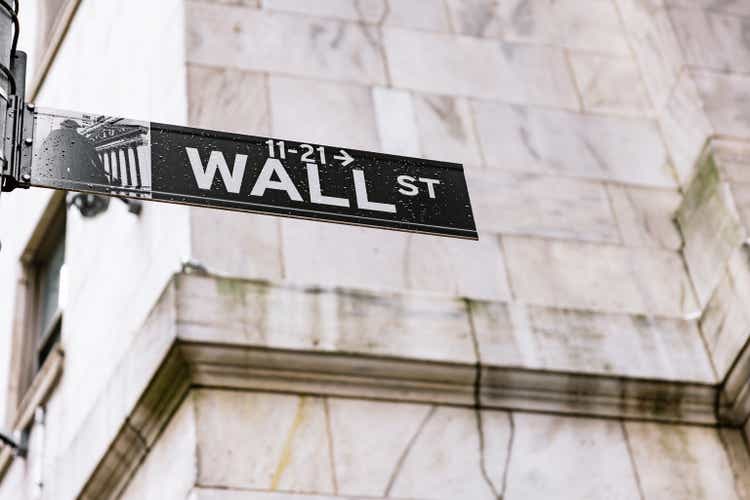Asian shares fell to the lowest level in two months, extending a global selloff in stocks after President Donald Trump’s latest tariff measures drove investors into haven assets.Japanese shares sank to the lowest level since August. About $2.
5 trillion was wiped out from US stocks after the S&P 500 declined 4.9% and the Nasdaq 100 slumped 5.5% Thursday, the biggest drop since 2020 for each.

Oil sold off and the greenback extended its drop on Friday as yields on the 10-year US Treasury hovered around the closely watched 4% mark. Markets in China and Hong Kong are closed.All in, the much-vaunted America-first trade — buying up assets that win when the US outperforms the rest of the world — is reversing on concern that the steepest increase in American tariffs in a century will hammer economic growth.
The trading forms a volatile backdrop for Friday’s US jobs report and a speech by Federal Reserve Chair Jerome Powell, which should set the tone for markets already worried about the outlook for the world’s largest economy.“If these tariffs stick, the economy is going to slow down,” said Mary Ann Bartels at Sanctuary Wealth. “Whether it’s a recession or not, it’s clear that the economy is headed for a slowdown in the US and around the world.
There’s no place to hide, but the fixed-income markets.”Trump has embraced tariffs as a tool to assert US power, revive manufacturing at home and extract geopolitical concessions. Economists say the near-term result of his measures will likely be higher US prices and slower growth, or perhaps even a recession.
French President Emmanuel Macron urged companies to pause investments in the US. France is pushing for the EU to hit US tech companies in response to Trump’s tariffs, a move that would broaden the trade war to the vast services sector and the digital economy. The European Union, the US’s largest trading partner, vowed Thursday to retaliate.
China said it will take countermeasures to safeguard its own interests.“From here, we must closely watch retaliation and look for signs of negotiation,” said Scott Berg, portfolio manager of the global growth equity strategy at T. Rowe Price.
Trump’s announcements drove a fierce rally in global bonds, sending the yield on benchmark Treasuries briefly below the closely-watched 4% level. Most other yields also tumbled as money markets priced in a 50% chance of the Fed delivering four quarter-point rate reductions this year.As spiraling tariff worries hammer US stocks, legendary investor Bill Gross is urging prospective dip-buyers to stay on the sidelines.
“Investors should not try to ‘catch a falling knife’,” he said in an email. “This is an epic economic and market event similar to 1971 and the end of the gold standard except with immediate negative consequences.”US Stock Rout Deepens On Tariff Shock As Bonds Rally: Markets WrapOther investors such as Steve Brice, group CIO at Standard Chartered Wealth Management, said investors should ‘buy the dip’ because of the so-called ‘Trump put,’ a theory that Trump will ditch policies if the stock market - which he touts as a report card - drops and rattles investors.
“Certain people now have started asking the question whether this is appropriate and that led to the point of do we still have a Trump Put?,” Brice told Bloomberg TV in an interview. “We believe the answer to that is yes. The question is when does that kick in.
”Meanwhile, the dollar’s extended decline in the midst of a global selloff in risk assets has sparked a vigorous debate about whether it retains its status as a haven during turbulent times. The Bloomberg Dollar Spot Index tumbled as much as 2.1% on Thursday, the measure’s sharpest intraday decline since its launch in 2005.
Investors are bearish on the dollar in the coming month for the first time since September, options data show.Hedge funds have increased their bearish bets on the dollar, mainly versus the yen and the euro, while also bracing for higher volatility into year-end, according to currency traders familiar with the transactions who asked not to be identified because they aren’t authorized to speak publicly.In commodities, oil extended its sharp drop after OPEC+ unexpectedly increased the supply by three times the planned amount in May.
Gold was steady after falling from its latest record high.Stock Market Today: All You Need To Know Before Going Into Trade On April 4Some of the main moves in markets:StocksS&P 500 futures fell 0.2% as of 10:19 a.
m. Tokyo timeJapan’s Topix fell 3.2%Australia’s S&P/ASX 200 fell 1.
3%Euro Stoxx 50 futures fell 0.2%CurrenciesThe Bloomberg Dollar Spot Index fell 0.2%The euro rose 0.
1% to $1.1064The Japanese yen fell 0.1% to 146.
24 per dollarThe offshore yuan rose 0.2% to 7.2689 per dollarCryptocurrenciesBitcoin rose 1% to $83,172.
37Ether rose 0.8% to $1,812.07BondsThe yield on 10-year Treasuries declined two basis points to 4.
01%Australia’s 10-year yield declined four basis points to 4.22%CommoditiesWest Texas Intermediate crude fell 0.4% to $66.
67 a barrelSpot gold was little changedThis story was produced with the assistance of Bloomberg Automation.Surprise OPEC+ Hike Adds To Trump Tariffs To Send Oil Plunging Around 7%. Read more on Markets by NDTV Profit.
.
Business

Global Stock Rout Extends As Investors Cut Risk: Markets Wrap

Oil sold off and the greenback extended its drop on Friday as yields on the 10-year US Treasury hovered around the closely watched 4% mark.












_0.jpg?itok=yAIF6nFK)

